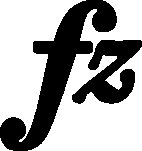



|
|
con forza in b. 231-232 in A, contextual interpretation |
|
|
|
con forza in b. 239 in A (possible interpretation→GE→FE,EE,IE) |
The con forza indication is written in A between the bottom stave in bars 231-232 and the top stave in bar 239. Under this indication, and over the R.H. part in bar 239, one can see traces of removal of a mark, probably a verbal indication or, e.g. 
 . This suggests that Chopin changed his mind and replaced the deleted mark by con forza (added over it). This is how it was interpreted by GE (→FE,EE,IE). However, according to us, it is likely that the erasure was not related to con forza, which could have been added earlier and concerned the L.H. octave phrase in bars 231-232. Such an interpretation is strongly supported by the comparison with bars 73-74, in which an almost identical L.H. phrase is provided with con forza. Taking into account the fact that this indication suits bars 231-232 much better (musically speaking), to the main text we adopt the second interpretation.
. This suggests that Chopin changed his mind and replaced the deleted mark by con forza (added over it). This is how it was interpreted by GE (→FE,EE,IE). However, according to us, it is likely that the erasure was not related to con forza, which could have been added earlier and concerned the L.H. octave phrase in bars 231-232. Such an interpretation is strongly supported by the comparison with bars 73-74, in which an almost identical L.H. phrase is provided with con forza. Taking into account the fact that this indication suits bars 231-232 much better (musically speaking), to the main text we adopt the second interpretation.
Compare the passage in the sources »
category imprint: Graphic ambiguousness; Differences between sources; Source & stylistic information
issues: Corrections in A, Inaccuracies in A
notation: Verbal indications
